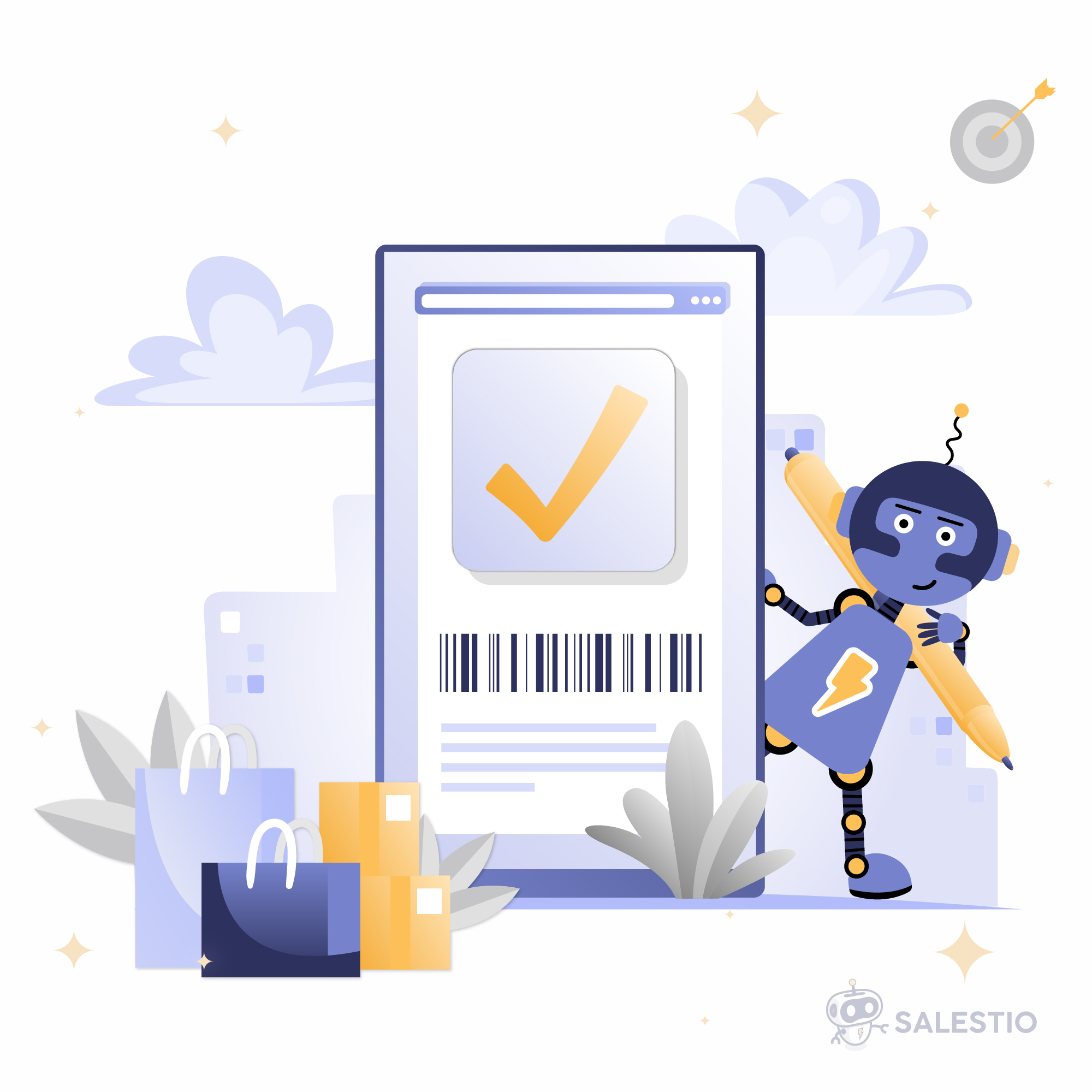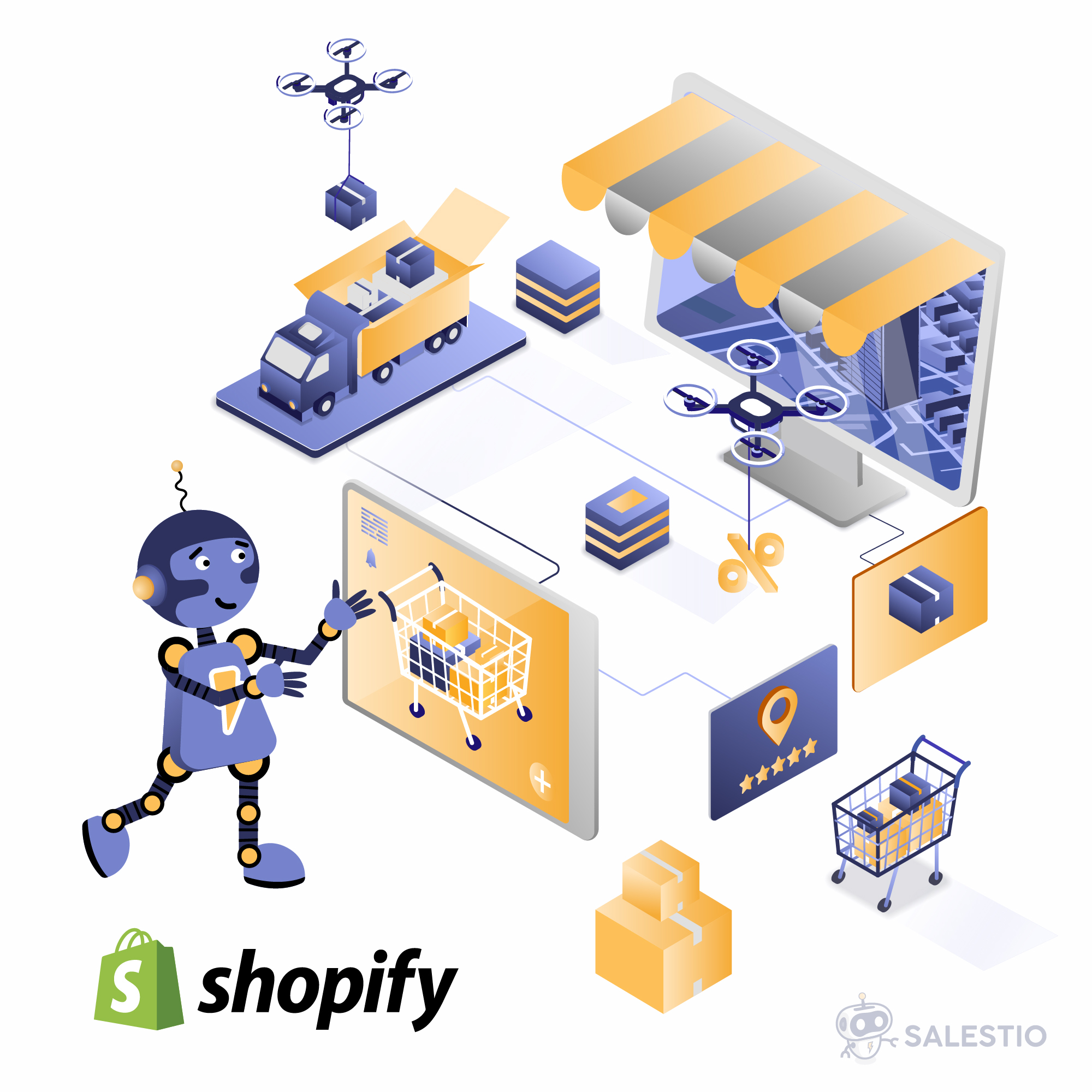19 Dec'25

Resumen del año 2025 de Salestio
¡Felices fiestas! Les deseamos una temporada llena de momentos acogedores y recuerdos entrañables 🥳Diciembre llega a su fin, y es un buen momento para recordar las novedades de Salestio durante el año pasado. A lo largo de 2025, introdujimos bastantes funciones nuevas y mejoras destinadas a hacer que la aplicación sea más fiable […]
21 Nov'25

Mejores prácticas en email marketing para vendedores online
El email marketing es una de las herramientas más efectivas que los vendedores de marketplaces pueden usar para fidelizar a sus clientes. Los vendedores pueden centrarse en mensajes dirigidos y convertir simples correos electrónicos en una poderosa herramienta de crecimiento para impulsar las compras repetidas y destacar en el espacio online. En este artículo, nos centraremos en los aspectos clave que debes tener en […]
31 Oct'25

Vende Bundles y Kits para el Black Friday y las Ventas Navideñas
La próxima temporada navideña es el momento perfecto para ser creativo con las ofertas de productos e introducir bundles y kits en tu catálogo. En esta época, los compradores buscan activamente comodidad e ideas para regalos. Agrupar productos es beneficioso tanto para vendedores como para compradores. Para ti, como vendedor, ayuda a aumentar el promedio […]
24 Oct'25

Evita errores comunes al vender en Amazon, Etsy & eBay con Salestio
Vender online puede tener muchos matices. Prestar atención a los detalles puede ser de gran ayuda para construir una tienda de rápido crecimiento. En este artículo, repasaremos los detalles más pasados por alto relacionados con los listados en Amazon, eBay o Etsy, y compartiremos consejos sobre cómo Salestio puede ayudar a mantener la coherencia de las páginas de productos. Errores generales […]
17 Oct'25

Acciones manuales vs. automatizadas en Salestio
Salestio tiene como objetivo liberar parte de la agenda de los vendedores de marketplaces, por lo que muchas de las funciones de la aplicación están automatizadas de forma predeterminada. En este artículo, repasaremos las opciones clave de automatización, explicaremos lo que funciona de inmediato y lo ayudaremos a configurarlas para que se adapten mejor a las necesidades de la […]
03 Oct'25

Publicar en Amazon, eBay y Etsy sin códigos de barras: errores y soluciones
En el artículo de hoy, repasaremos los detalles relacionados con los códigos de barras al publicar productos. Cada marketplace tiene sus propios requisitos, por lo que exploraremos cómo funciona Salestio para cada plataforma. Amazon tiene la mayor cantidad de regulaciones con respecto a los códigos de barras. Los códigos de barras son un tipo de identificador de producto entre muchos. Consulta el siguiente artículo para obtener más información sobre […]
26 Sep'25

Salestio para Shopify: Configuración Explicada
La mayoría de las funciones de Salestio funcionan sin necesidad de ajustar la página de Configuración, pero aquí puedes configurar la aplicación para que se adapte mejor al flujo de trabajo de tu tienda. Este artículo explicará las opciones disponibles y cómo ayudan a personalizar Salestio. La página de Configuración en Salestio presenta pestañas para la configuración general de la aplicación (los cambios aquí […]
19 Sep'25

Mapeos de SKU en Salestio: Personaliza los pares de productos entre plataformas
Salestio puede establecer una conexión entre los artículos del marketplace ya existentes y los productos en tu tienda de comercio electrónico. Para encontrar los pares de productos, la aplicación compara los SKU de los productos y localiza una coincidencia. Por defecto, Salestio sincroniza las cantidades y los pedidos de los artículos que tienen el mismo SKU. A veces, el mismo producto puede terminar con un […]
12 Sep'25

Salestio: Gestión de devoluciones en Amazon, eBay y Etsy
Gestionar las devoluciones de Amazon, eBay y Etsy se vuelve mucho más eficiente cuando todo está conectado en un solo lugar. El proceso de devolución puede mantenerse organizado cuando los marketplaces están sincronizados con una tienda de comercio electrónico. En este artículo, veremos cómo Salestio gestiona los pedidos devueltos o cancelados. Cada marketplace tiene configuraciones específicas, por lo que puedes definir […]
05 Sep'25

Funciones clave de Salestio en Shopify
Salestio sirve como un medio para conectar tu tienda Shopify con Amazon, eBay y Etsy. En este artículo, repasaremos las principales funciones que ayudan a mantener tus listados sincronizados con la tienda Shopify. Enviar el catálogo de Shopify a los marketplaces Salestio puede enviar los artículos de tu tienda Shopify a los marketplaces de tu elección. […]
- 1
- 2